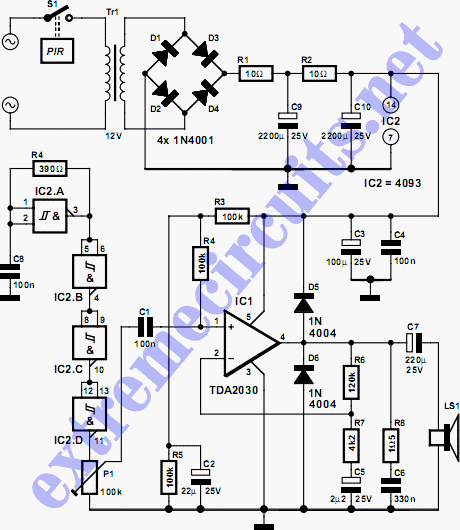 The R-C network is dimensioned such
that frequency of oscillation is greater than 20 kHz. The amplitude can be set
using P1. An IC power amplifier follows the oscillator to amplify this tone to a
level that will be deafening for dogs (and other small creatures).
The R-C network is dimensioned such
that frequency of oscillation is greater than 20 kHz. The amplitude can be set
using P1. An IC power amplifier follows the oscillator to amplify this tone to a
level that will be deafening for dogs (and other small creatures). The peripheral circuitry corresponds to the specifications in the data sheet. With a supply voltage of 15 V, the TDA2030 can generate around 5W into a 4Ω speaker. According to the data sheet, the supply voltage of the TDA2030 can be increased to as much as 30 V, at which level it generates a hefty 16W into 4Ω (or 11W into 8Ω).
However, the 4093 still must be operated at 15V, which is the maximum allowable supply voltage for a CMOS IC. In principle, any inexpensive piezoelectric tweeter whose frequency response extends past 20kHz can be used for the speaker; it should have the highest possible sound pressure level (>100dB). A suitable type is listed on page 626 of the Conrad Electronics catalog. The impedance of such speakers rises to around 40 to 50 Ω at 20 kHz, so it is naturally not possible to obtain the power listed in the data sheet using this circuit. Nevertheless, it should be more than enough to scare off dog and master.
Back to ...